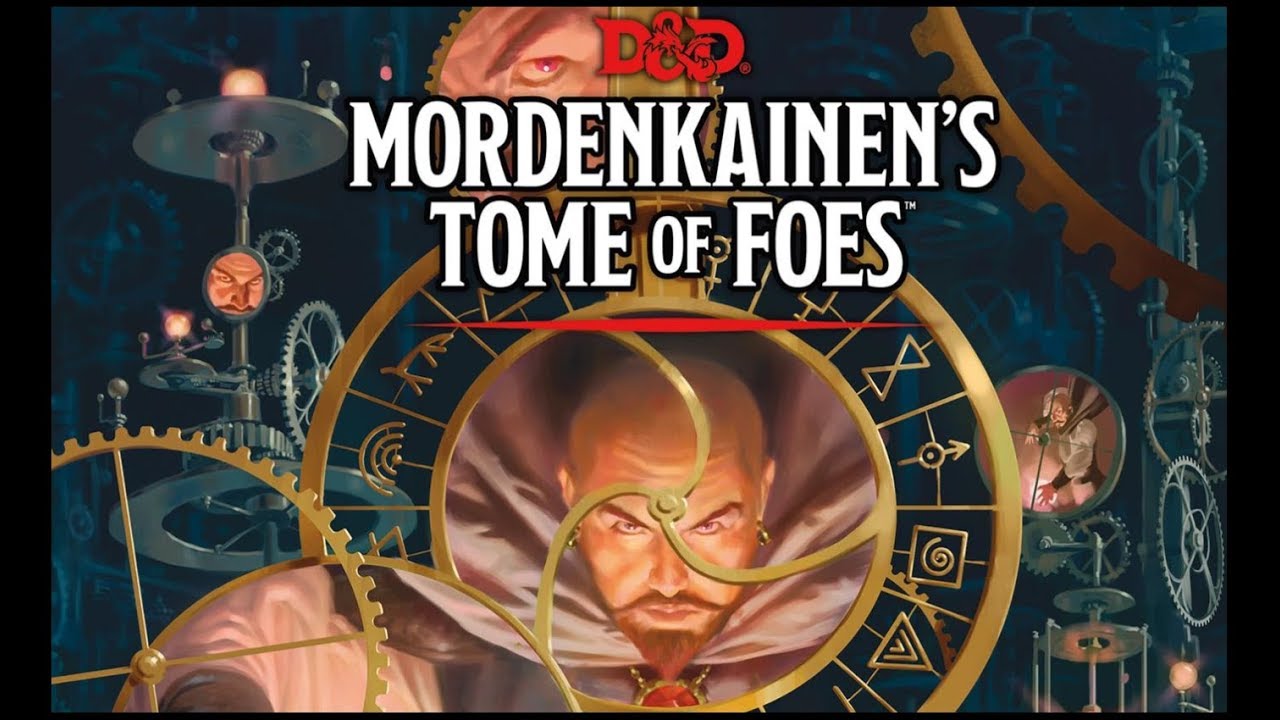Mordenkainen’s Tome of Foes Expands the D&D Universe

Mordenkainen’s Tome of Foes, released May 29, is a handsome hardcover with brilliant, evocative artwork throughout, including a few two-page illustrations. The book itself is split into two parts: A detailed look at several races and conflicts from across the D&D multiverse; and a bestiary. Steeped in D&D lore, the Tome brings together creatures, idea, and conflicts from throughout the game’s history (Greyhawk, Dragonlance, Forgotten Realms, Dark Sun, even Spelljammer). The book includes many useful tables and player options. The writing is clear and concise and includes many in-character asides and bits of humor.
After a handy introduction, Tome of Foes opens with an overview of the Blood War, the eternal war between the demons and the devils. The history and the current nature of the conflict are discussed as well as the combatants, primary battlefields, tactics, and strategies. More importantly, numerous ways are presented to involve player-character in the eternal conflict.
Beyond the war itself, the chapter provides some excellent information about the lawful evil devils and the chaotic evil demons. Each of the nine archdevils of Hell is profiled along with the realm under his or her (or its) command. Useful and entertaining, these profiles include the archdevil’s modus operandi, the bargains they strike with mortals, the cults they inspire, and telling details such as the fact that Mammon, Hell’s lord of greed, is too cheap to keep up his realm, a sprawling city of squalor and crumbling infrastructure.
Demons too, are examined. Several demon lords are presented, as well as demonic cults. The infectious nature of the Abyss is detailed as a three-stage invasion of worlds that just begs to the center of a campaign or at least a night’s adventure.
Included in this chapter are new tiefling subraces and many tables for customizing demons, devils and cults.
Chapter 2 begins with a unique, sad and touching creation story that informs all manner of elves. Details on elven stages of life, outlook, and the trance-like reverie are presented, as well as information regarding unique elven magic such as mythals and bladesingers. Details are given regarding some of the elven deities, their mysteries and blessings (including the sex-changing blessing of the creator god).
The chapter next offers us an in-depth examination of the drow, their violent society, dark gods, and their undying hatred for the rest of elven-kind. We also get a discussion of the eladrin and the Feywild, and the strange and psychological Raven Queen and her nightmarish servants. The chapter ends with several new character options and a few useful elven tables.

Chapter 3 relates the strange and tragic tale of the enmity between the dwarves and their evil cousins the duergar. Dwarven life is examined, with extensive information on clans, stronghold, and the dwarven pantheon. Detailed information is given for the dwarves of the multiverse, including hill dwarves, gold dwarves, and the pathetic gully dwarves, as well as the traditional enemies of the dwarves: dragons and giants.
Even more useful is the information presented on the duergar. These sad creatures — twisted by their enslavement by mind flayers — are a “dark reflection” of dwarves. Their joyless lives are nothing but endless greed and warfare, their strongholds are polluted factories of ceaseless drudgery. Psionics — “gifted” to them by the illithid — allow the duergar to cast enlarge/reduce as well as invisibility, making them powerful and unpredictable foes. The chapter ends with an option for duergar PCs (a challenging option, I’m sure) and several pages of useful tables for dwarves and duergar.
Chapter 4 is entitled “Gith and their Endless War” and examines another race of former illithid slaves twisted and broken by the ordeal (geez, the mind flayers are jerks!). In this case the gith, after successfully winning their freedom, disagreed about their future. The githyanki wished to replace the mind flayers as evil enslaves of the Material Plane, while the githzerai sought to build a civilization of order and enlightenment. Details are given for the two factions’ society and homelands, as well as unique magics and artifacts (including githyanki “sky ship” aka Spelljammers!). Finally, we are given traits for gith PCs and a score of handy gith tables.
Unexpectedly, in a book called “Tome of Foes,” the next chapter concerns gnomes and halflings. But unexpected or not, Chapter 5 is a welcome addition and provides players and DMs with a wealth of useful information. In addition to the usual facts on society and deities, there are fascinating details such as halfling superstitions and the “celestial toymakers.” Several pages are devoted to the different subraces of gnomes. Also included are the usual tables, charts, and character options.
Chapter 6 comprise the 2nd half of Tome of Foes, presenting over a hundred creatures in standard Monster Manual format, helpfully indexed by type, environment, and challenge rating. Some of these monsters are new, some of them are old (reaching as far back as 1981’s Fiend Folio). In addition to presenting many foes from earlier in the book — a dungeon’s worth of demons, devils, drow, and duergar — there is a multitude of marvelous monsters. Some of my favorites include: the gruesome Cadaver Collector; the brilliantly mad Derro; the fantastic hippo-fascist Gif (Spelljammer again!); Oblex, the uber-oozes; four terrifying troll variants; and the Tortles — the Elderly Lawful Druid Turtles!
In conclusion, Mordenkainen’s Tome of Foes is a fascinating and helpful book full of beautiful art, adventure hooks, and useful resources. I heartily recommend it to DMs looking to expand their game and players of dwarves, elves, halfings, or gnomes wishing to deepen their roleplaying.



